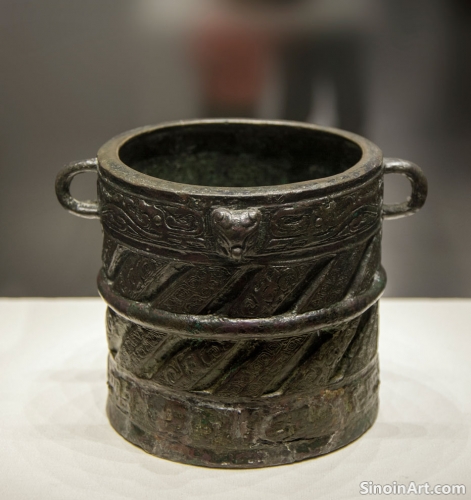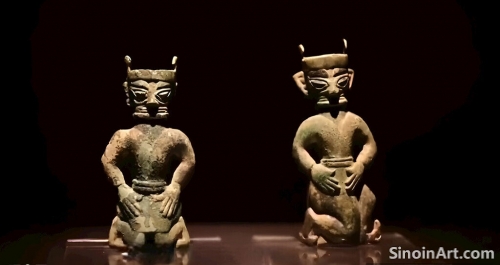The Use of Bronze in Ancient Chinese Transportation: Chariot Decoration and the Display of Power
|
Beyond the functionality of bronze fittings in chariots, the material was also used extensively to create decorative elements, that served both an aesthetic function, but also communicated the power, status, and wealth of those who used them. These objects were intended to combine practical use with the communication of a specific set of social and political messages. The visual design and decoration of these vehicles helped to underscore the power of those who traveled in them.  Bronze was used to create elaborate decorative plaques and ornaments for chariots, often featuring intricate designs, complex symbols, and depictions of powerful animals, and reflecting the social status and authority of the person who was in charge of the chariot. The use of these pieces helped to enhance the overall look of the vehicles and to convey important messages to the viewing audience.  The use of bronze bells and other sound-producing devices on chariots also helped to emphasize the presence of their occupants, creating a powerful multi-sensory experience designed to communicate their importance and to also serve as a form of display. The use of sound and visual spectacle were both essential elements of the presentation of power and authority.  The lavish use of bronze in chariot decoration also helped to underscore the importance of military might and the power of the state, projecting an image of both authority and also of strength, and they were also a tangible display of the wealth and power of the ruling class. The display of wealth, and the association of bronze with power helped to reinforce and maintain the social and political order of the time. |
Tag : bronze chariot decoration, ancient transportation, Chinese power symbols, military display, elite vehicles
Related information
- Bronze Weights and Measures in Ancient China: Standardization and Trade
- Bronze Ware and the Development of Ancient Chinese Metallurgy: Innovations and Techniques
- Chinese Bronze Ware in Global Collections: A Transcultural Perspective
- The Bronze Masks of Sanxingdui: Exploring Ritual, Transformation, and the Unseen Realm
- The Use of Bronze in Ancient Chinese Public Works: Infrastructure, Irrigation, and City Planning
This article explores the use of bronze for weights and measures in ancient China, highlighting the importance of standardization, fair trade practices, and the role these artifacts played in facilitating commerce across the empire.
This article explores the development of ancient Chinese metallurgy in relation to bronze ware production, highlighting the discovery and use of different metals, the creation of alloys, the development of casting techniques, and the technical achievements of ancient metalworkers.
This article explores the global distribution of Chinese bronze ware, highlighting its presence in museums and collections worldwide, the history of collecting, and the value of a transcultural perspective in understanding their significance.
This article delves deeper into the bronze masks of Sanxingdui, exploring their unique characteristics, their role in ritual performances, their connection to the spirit world, and the insights they provide into the distinct religious beliefs of the ancient kingdom of Shu.
This article explores the use of bronze in ancient Chinese public works projects, highlighting its role in surveying, water management, construction, and demonstrating its importance in the development of infrastructure and city planning.